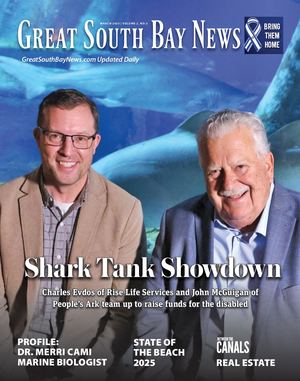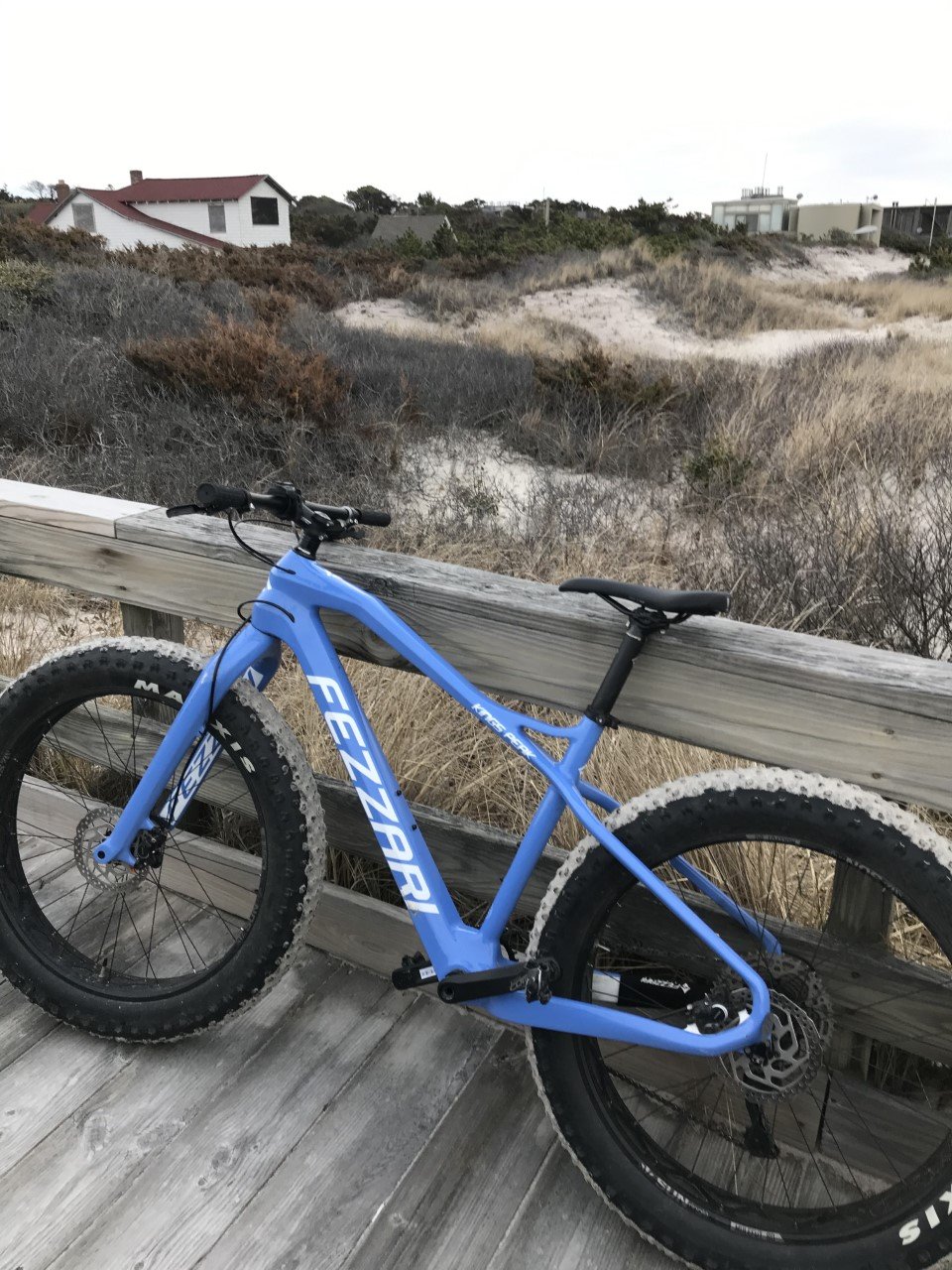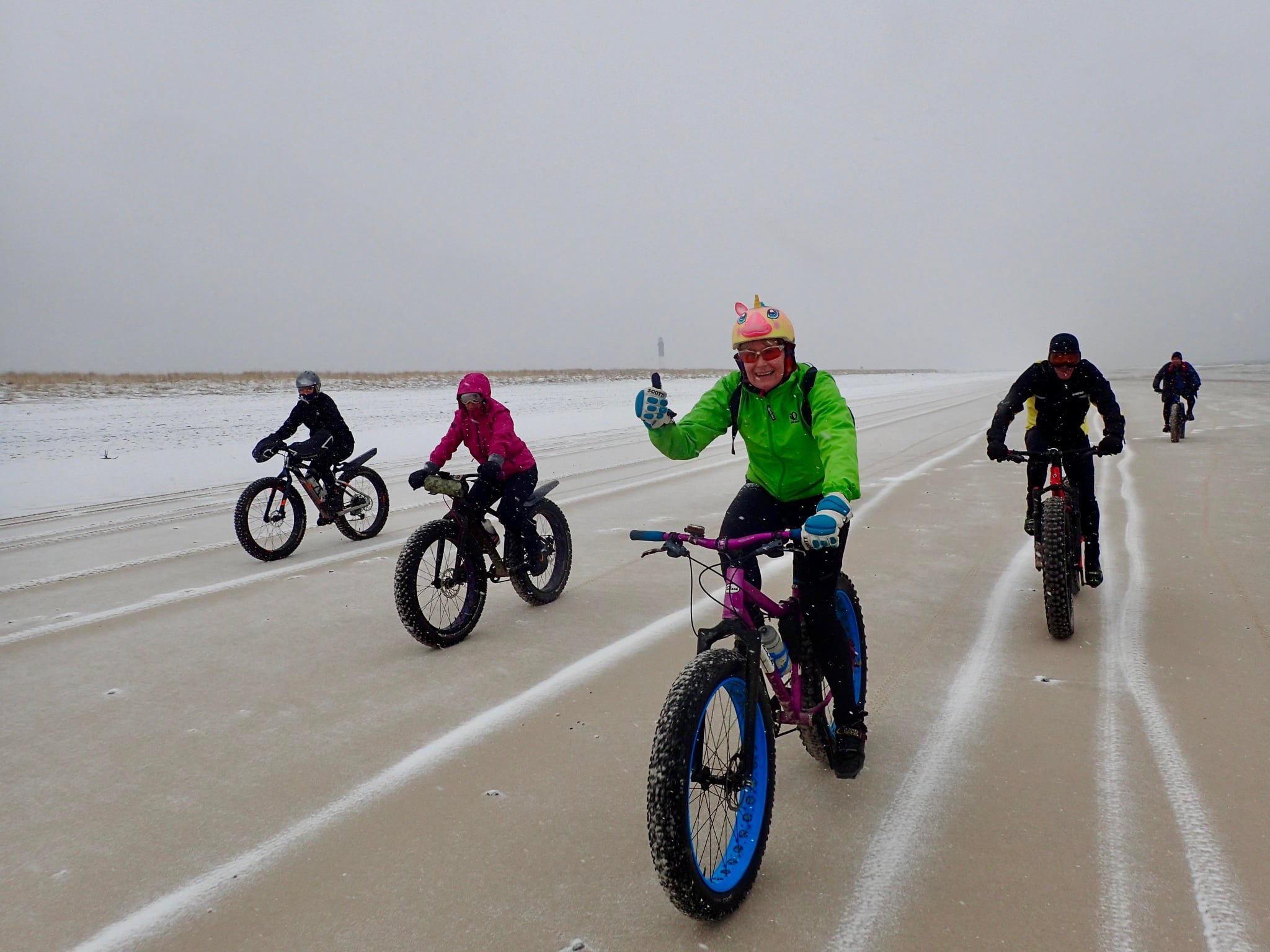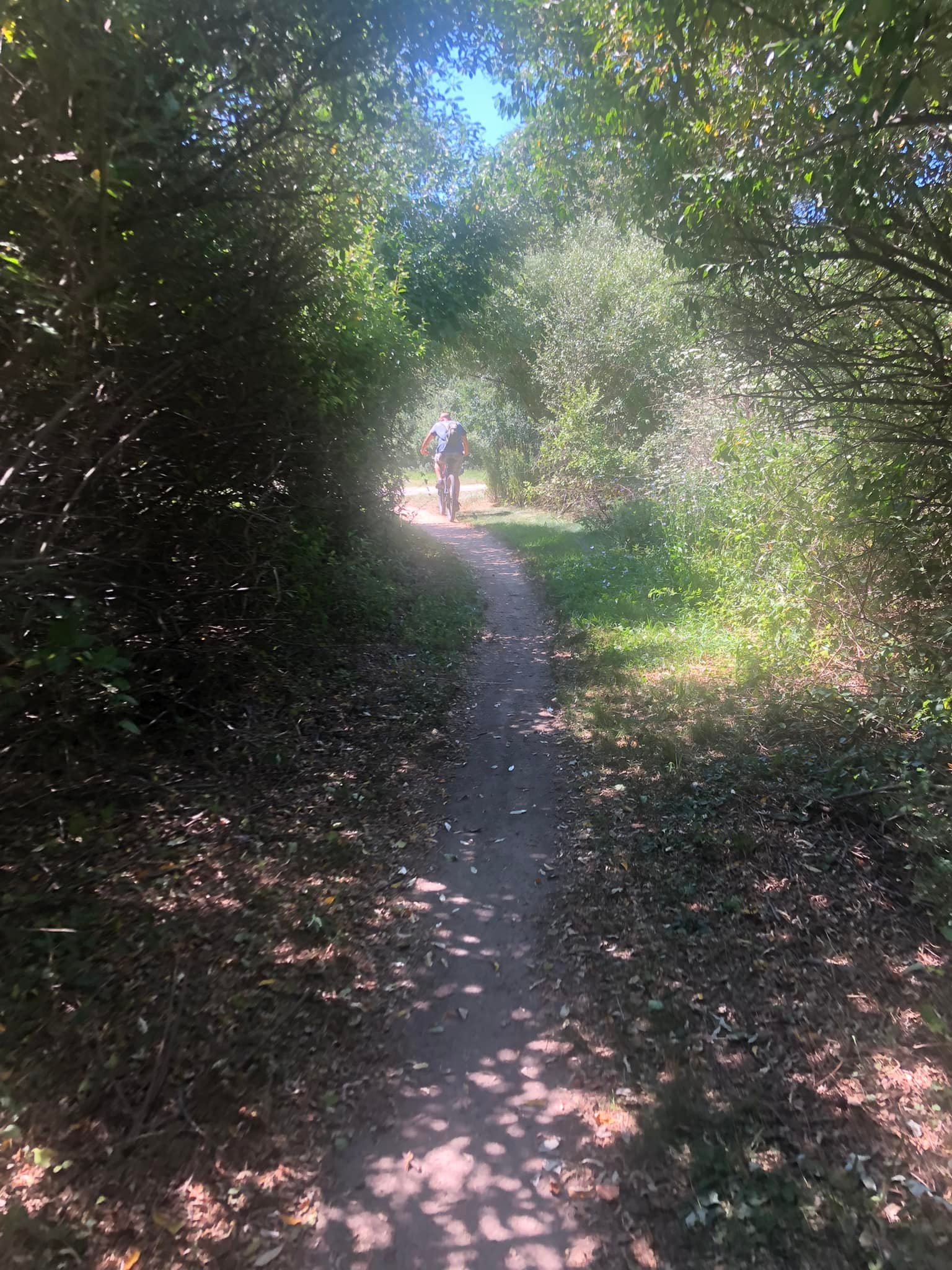Postseason Fire Island drops from an estimated peak population of just under 15,000 to 293 people. Most bars and restaurants close for the season after Labor Day, and the legendary summer parties become dormant until Memorial Day. But as most of the island and its activities close for the season, it becomes peak season for a little-known sport. Low headwinds and low tide are prime conditions. Descending across the beach at Robert Moses State Park Field 5, you find the high tide line and the 4.8-inch wide bike tires at low air pressure crunching broken shells scattered along the packed sand.
Passing through curious expressions from late-season beach goers, some will flash a thumbs up. On the left, the lighthouse is the unofficial landmark noting you have crossed into Fire Island. In less than a mile, you pass the towns of Kismet and then Saltaire. Just over four miles, you enter Ocean Beach, which has become a pit stop for a drink at C.J.’s. Back on the bike, you pedal past the insular community of Point ’O Woods and towards Sunken Forest, one of a handful of maritime forests worldwide. Passing the iconic community of Cherry Grove, the Carrington House soon comes into view. Constructed just behind the dunes, this location (now on the national historic register) hosted literary giant Truman Capote, who wrote part of his book “Breakfast at Tiffany’s,”as one of Carrington’s many distinguished guests. Past the Fire Island Pines, you see the abandoned 1960’s chic resort Talisman, gradually disappearing through the elements of nature and memory.
The tide is starting to come in, and the headwinds are picking up as you approach Water Island, the narrowest part of Fire Island. Water Island is the furthest I rode before turning around back to Field 5. But many others make it to the new inlet cut by superstorm Sandy as a daily routine, such as Robert “Orange” Gill.
“As a year-round cyclist, I am drawn to Fire Island,” Gill explained. “During the 25-mile trek along the ever changing coast, there is much to explore. From Democrat Point to Old Inlet, there is much to discover. Large moon snails, bottles 80 years old or more, WWII era 50-caliber shell casings, and exploring the “Bessie White” wreck are just some of the sights you might encounter. A highlight of these rides is stopping at C.J.’s in Ocean Beach, which hangs a stocking with my name on it around Christmas time. It was bartender Bob Webber gave me the nickname Orange.”
Another familiar off-season rider is wildlife enthusiast Bob Muller. “Fat tire riding for me is the sights, sounds, and smells of the beach and ocean. Growing up around the waters of Long Island, this will always feel like home. I enjoy the fauna. I am a bird watcher, former wildlife rehabilitator, and enjoy seeing the snowy owls, skimmers, eiders, and oyster catchers.”
Mountain bike advocate group Concerned Long Island Mountain Bikers (C.L.I.M.B.) and Facebook groups such as L.I.F.E: Fat Bike Enthusiasts or Long Island Area Cyclists, become one of a few meets and greets to plan local group rides or discuss the latest fat bike innovations. Some of these rides have caught on as annual large-scale group rides, hosted every St. Patrick’s Day from Field 5 Robert Moses to C.J.’s in Ocean Beach and beyond.
Photos by Anthony Benavides, Jovanny Sanchez and Chris Verga.






























